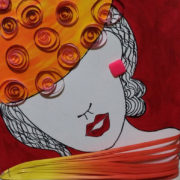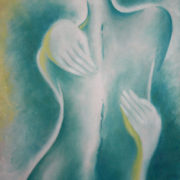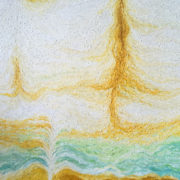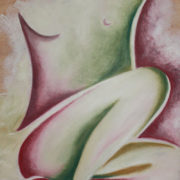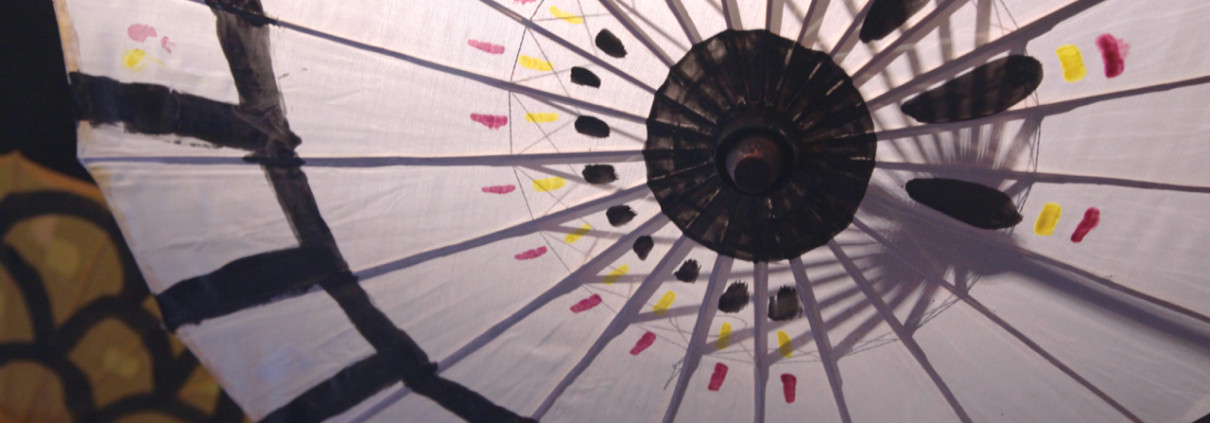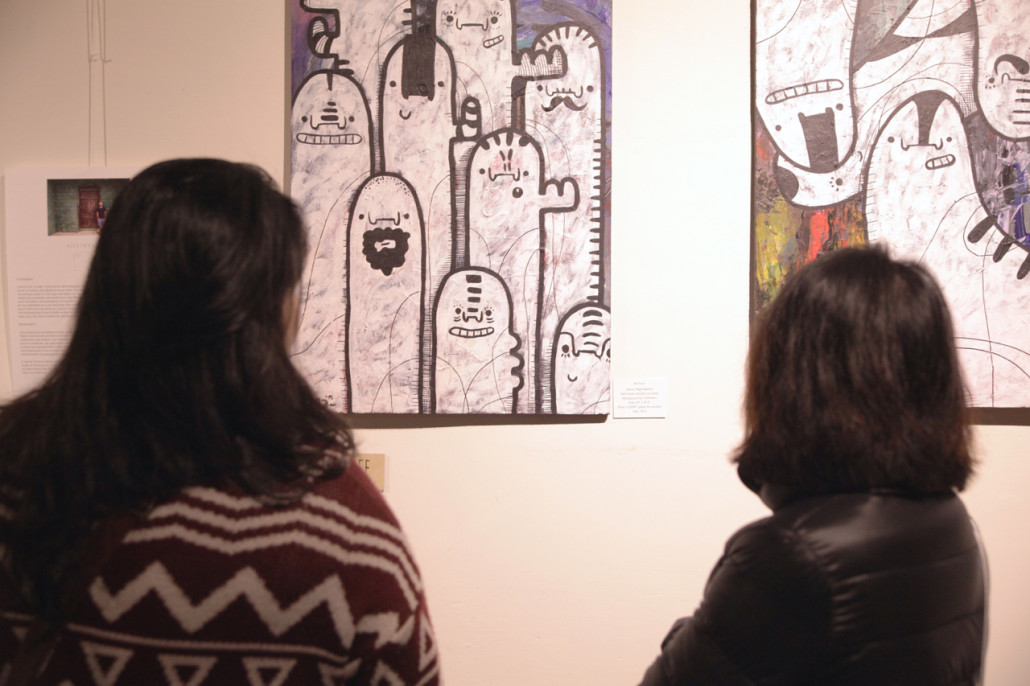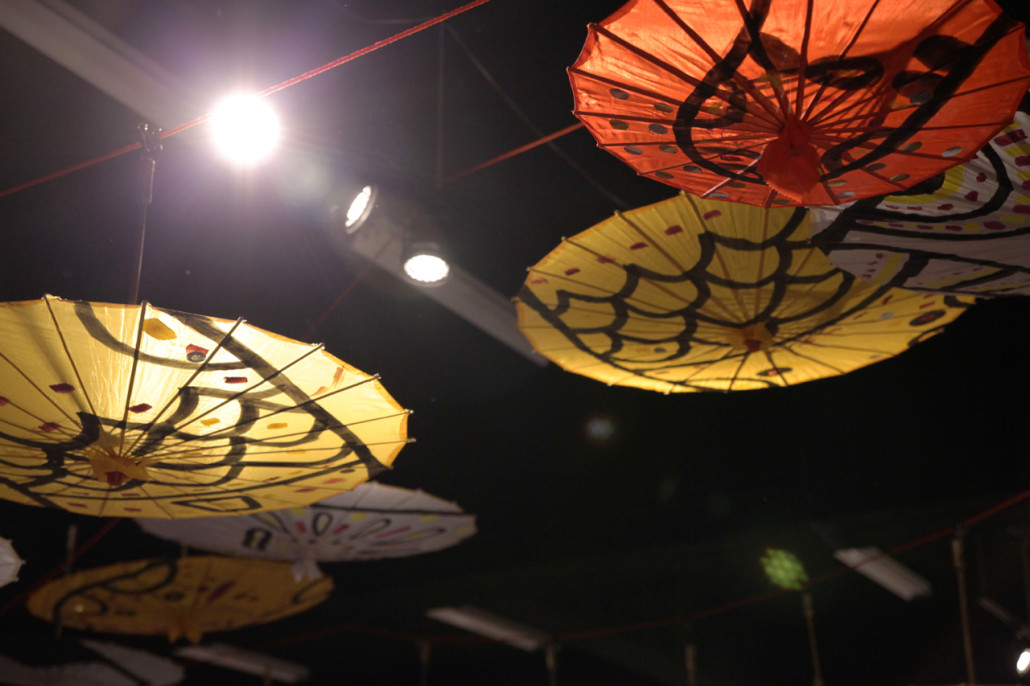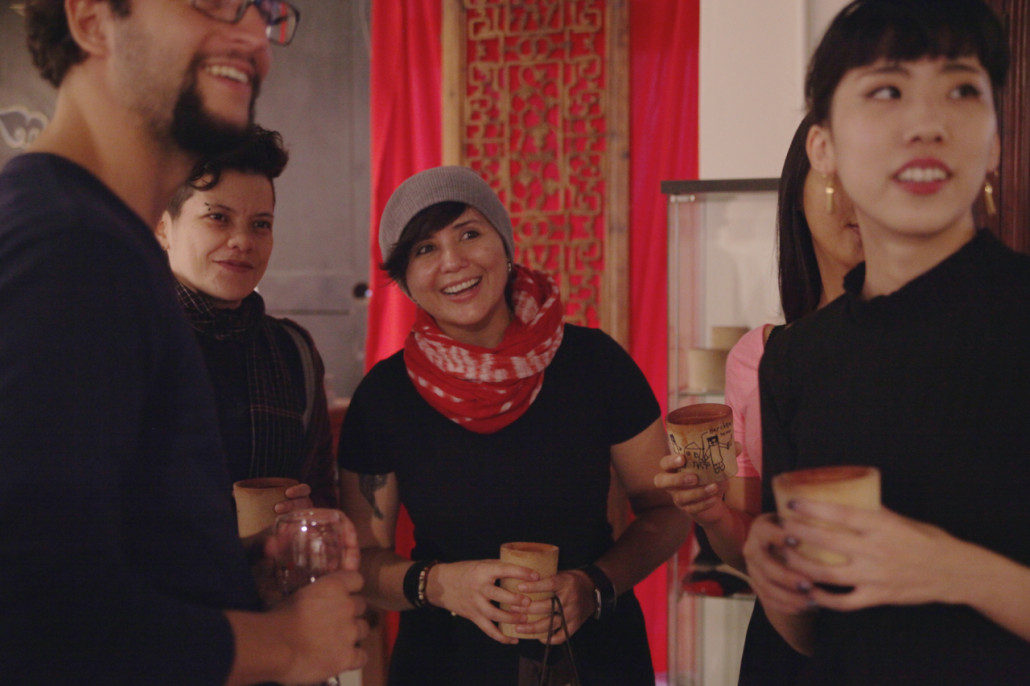Pragya Borar
- She: Her own self-expression
- My Happy Place
- Out and Loud
- Soul Talk
- Self-Lover
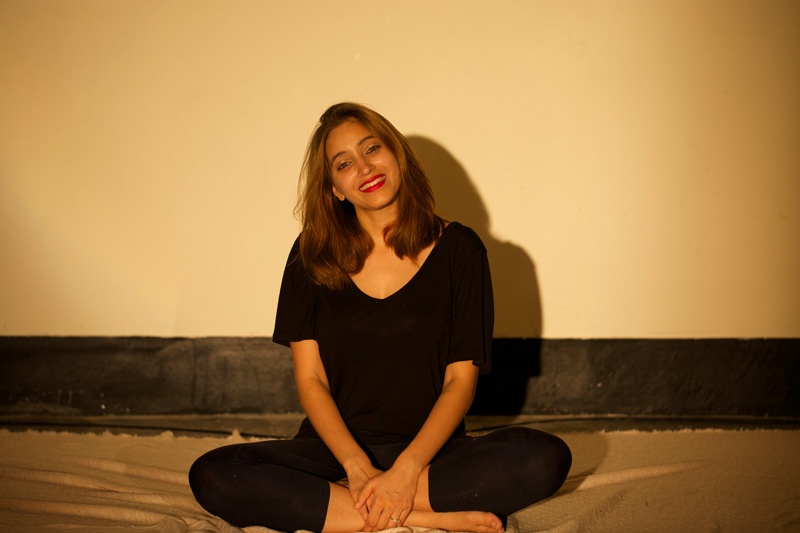
ARTIST BIO
Pragya is a self-taught mixed media artist. She started playing with colors at the age of 5. Art is symphony of her life and her self expression. Through her art she likes to discover her boundless inner creativity and passion, as she constantly strives to communicate her inner self through it.
Pragya’s current work of art on watercolor paper and canvas is about women and nature. It focuses on the journey of being a woman and how everything about nature inspires her to keep doing what she loves.
She believes women need to be themselves in all the phases of life irrespective of what they are asked to be. They should embrace their imperfection because it makes them who they are.
Through her art, Pragya has tried to push herself to explore new boundaries. She hopes to inspire people to pursue their passion. Magic happens when you don’t give up even though you want to. The universe always falls in love with a stubborn heart.
Kristine Huang
- Layers of hurt, hate, love, lost…!
- Steps to be freedom!你腳下踩過的⽚段重要的提醒這我, !⾃由的美好!
- embrace no.2!有時候, 擁抱⾃⼰花的⼒氣需要很⼤很⼤!
- please feel me in 8 different ways!
- Me, myself and I!
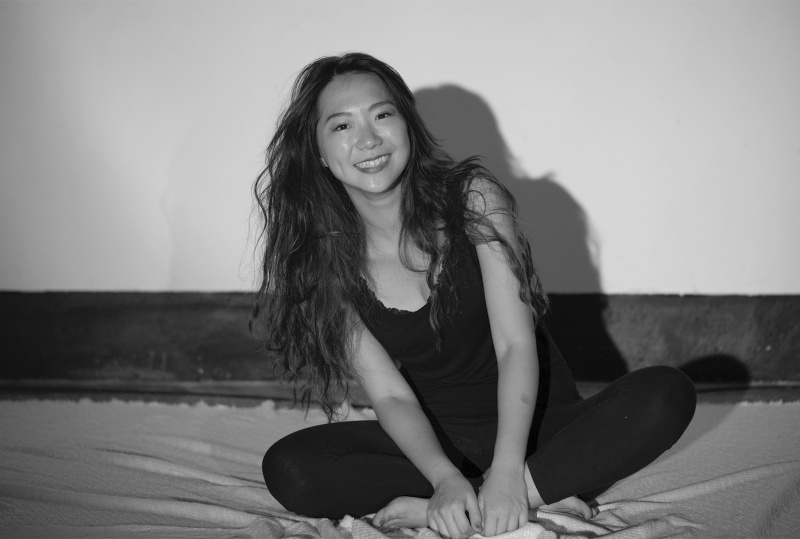
ARTIST BIO
“透過繪畫,我把自己一一拼整回來,表達一則則烙印在心裡的故事。”Ting Wei Huang 就讀美國洛杉磯時尚設計學院主修時尚設計,並在2015年赴義大利佛羅倫斯Polimoda 服裝設計與行銷管理學院進修。Ting Wei的繪畫就像一篇篇的日記,藉由顏色的變化與柔軟的線條來敍說故事
Ting Wei Huang studied at FIDM in Los Angeles, USA, and majored in Fashion Design. In 2015, Ting Wei moved abroad and attended Polimoda Fashion Institute in Florence, Italy, and majored in fashion design. Ting Wei’s paintings are portrayed through the style of journal entries. She tells stories through changing color shades and elegant lines.
ARTIST STATEMENT
Ting Wei Huang作品傾向於傳達自我探討的意義與意象。擅長放大細微的感覺,抽象具體繁雜的內容,擁抱這份觸動,在創作裡享受著,跳舞與歌唱… 從小就愛繪畫的她, 藉由繪畫藝術傳達如何面對自己、了解自己,進而接受自己的過程。透過反覆動作的描繪手筆,不斷產生矛盾與掙扎,勾勒出她內心深處那些想被看見的輪廓。Ting Wei希望她的藝術作品可帶給人們一份喘息和沈澱的空間,靜下來去感受與擁抱生命中的美好。
Ting Wei Huang’s works are based on introspection. From abstract concepts to concrete stories, the content of her paintings consistently brings forth a variety of intricate details. While indulging in dancing and singing, the pure enjoyment lies within each creating process. Ting Wei found her love and passion in painting since a young age. The art of painting and creating provides a leeway for Ting Wei to dive into self-acceptance, self-understanding, and eventually, self-affirmation. Through her paintings she has tried to reflect her different feelings from happiness to struggle, she hopes that her work of art can make people embrace the real beauty of life.
Meet the Artist: Ale Bara
Born in Guatemala, Ale Bara, a self-described nomad with “itchy feet”, has lived and created art in countries across Europe and North America, and chose to come to Taiwan after leaving Kenya. Formally trained in industrial design, Bara paints not for financial success, but because she likes it. Since her childhood, she has filled sketchbooks with comics and today she paints not only to communicate to the world but also to escape to another one. One she hopes will make her audience smile, just as the people who crossed her path have.
Her first foray into creating art outside of her sketchbooks happened in 2004 when Under Dusken, a Norwegian magazine, hired her to create comic accompaniments for their articles. Today, many of her pieces depict funny characters she’s adapted from real life and depicted in a whimsical, colorful way.
Since then Bara has exhibited her art the world over, her itchy feet leading her to discover new techniques, people and lifestyles in each new place which she has integrated. Often her illustrations reflect something idiosyncratic about the country she resides, the comic exhibited at the Red Room depicting a foreign character trying stinky tofu and navigating Taiwan’s motorcycle filled traffic is one example of this.
The umbrellas that continue to adorn the Red Room are another example of her creative incorporation. Initially created for the Chinese New Year, put together these umbrellas create a giant goat which cares for everyone from its vantage point in the heavens. Perhaps most inspiring to her about Taiwan is the dedication to artisanship and handcrafts. “Everything in Taiwan is so well done,” she said. “I would love for my work to be like that.” Since coming to Taiwan she has increasingly experimented with different materials from rice baskets to bamboo to giant canvases.
In the interview below, Bara speaks a little bit more about her personal art style and how she became involved with the Red Room.
You developed this world full of these characters that are inspired by the people you see in everyday life. How has your style evolved over the years?
Well I have moved a lot, so I think it depends on the people who have crossed my path. They make my style different.
I started doing the noses on the characters I have now when I was in Kenya, because I just saw big noses everywhere. The bald heads also are influenced by Kenya because a lot of people shaved their heads there.
[Every time I travel I see] the people, the features, the color– everything is different– so I think I just start grabbing things from every culture. [I look at] the way people are, the way people dress and react and I think that’s what changes my style, just traveling.
Do you think switching from digital to a hand drawn method has made you think more carefully about what you choose to include?
Well I think digital work is much easier. Everything is possible. So with painting by hand you have to know how to do a lot of stuff so it takes a while for you to get there. I’m trying to paint by hand, but I don’t have technique, so it’s just lots of color and very, very simple. I hope someday I will develop a technique.
At the beginning I did think more carefully because when I draw in my sketchbooks I really like them really neat. I started drawing with pencil and erasing and drawing and erasing. Then I thought, well, mistakes can be a beautiful thing, so now I only draw with pen. If I make a mistake I try to think of how to fix it and how to make it part of my piece.
Now it doesn’t really make me think more, it makes my piece become something different than what I thought at the beginning.
I noticed on your website that you did an exhibition and the materials were rescued from the recycling bin. What motivated you to do that and how do you feel using those materials, rather than something purchased for the store, changed your art or improved it?
I think it’s because I’m all about recycling and not spending money if I don’t have to. When I was living in New York I started seeing all these things that people threw out. In New York they just put it on the sidewalk so someone else can take it. You would just be walking and find amazing things that you could paint on.
It has worked very well and I think it looks really nice. It gives live to something that for someone was dead before.
What is your favorite thing that you resurrected or transformed? Is there anything that stands out?
I have painted so many things. I didn’t find it in the street, but I found some bamboo spoons that I really like. So I think I like painting on bamboo—the texture is really cool and the color of the bamboo is really nice.
How did you start developing your characters in 2004?
When you are an illustrator you have to start developing a style because they hire you based on your style, but I do have different styles like you can see in the exhibition.
Like the zodiac collection, I had never drawn animals before. I didn’t quite like the result, but that’s what turned out. I just keep experimenting and seeing what I can do.
How do you deal with and move from art which your unsatisfied? What was your response to the zodiac collection?
I have the ability to move on quickly and to just let go. It didn’t turn out how I wanted “okay, let’s exhibit and see what people think of it”. Some people liked it even though I didn’t; they bought most of the collection.
I just put it out and some people like it and some people don’t. You must find a home for whatever you have.
You mentioned there are moments when you don’t like the end result, but are there moments where you’re uncertain throughout the process but love the results?
Yeah, most of the time. I think I have a problem because I don’t like doing the same things.
Everything I do is just an experiment. When I started trying to sell my art some people told me “you know you should just do this style and stick to it because that’s what people like”, but that doesn’t really make me happy. Sometimes you like red and sometimes you like blue, so why always stick with red just to satisfy people?
Now I don’t care about people that much, unless it’s a commission. Sometimes it’s really hard to do commissions because sometimes you just don’t want to draw, or you just see something that inspires you and you want to draw exactly that.
Are there ever moments during a commission where you feel you’ve discovered a part of you that you wouldn’t have otherwise discovered because you were forced to think in another way?
Sometimes, but very few times, like right now I have a commission with zodiac animals. I really didn’t want to do them because I didn’t really like the other ones so I really cracked my head and thought about it and sketched. The [end] result was awesome! I really liked it.
Ultimately the clients have to trust me. I always tell them I have to do my own stuff. I’ve lost clients because they’ve told me to do something else and I’ve refused. I refuse to do something I’m not passionate about.
What do you hope your art communicates? Does it change with each piece of art you complete or is there a general feeling you hope to evoke in people?
I just paint because it makes me feel really good. When I’m angry or sad, I paint and everything just goes away. For me, drawing has been an escape from this kind of weird world; that’s why I draw. That’s the way I communicate. I’m very introverted, so I can make a drawing for you if you want me to say something.
I describe my art as funny and quirky. I just want to make people smile when they see because they make me smile. That’s it . Very simple.
How were you approached for Visual Dialogues?
I’m always willing to participate and give a hand, so Red Room always calls me to see if I’m free to do stuff and I’m always free to do stuff.
Originally, I wasn’t going to take part in Visual Dialogues because I thought I didn’t have something to share. Then Charles wrote me and asked me to participate. He said I’d be perfect for the last one. It’s mutual participation. They call me and I’m eager to just be there and paint.
How do you think the Red Room community has affected your art at all? Has being in the community beyond painting changed anything for you?
Yeah, actually, I had to paint on a big canvas for Artists Break the Mold and Artists Break the Flood.
I’d only painted on small things because they take less time and I’m impatient. I thought final piece on the big canvas was awesome. I really like how my characters looked. Even though I’d done murals, it was different on the canvas.
I think that’s how Red Room has helped. They’ve kind of encouraged me to paint on a big scale. The pieces in Visual Dialouges, the big ones, I wouldn’t have decided to do before because I had never experienced it. I experienced it with Red Room.
[At the Red Room] artists are experiencing mural paintings, big canvas paintings, and other sort of mediums. Red Room is giving them the opportunity to do that which is just pretty cool.





